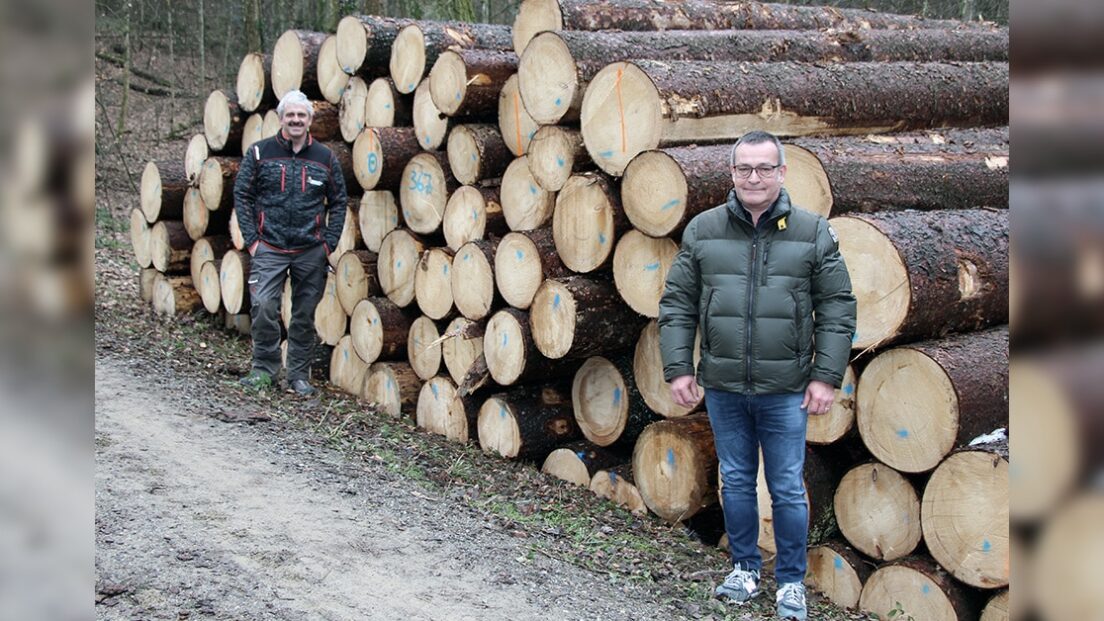Timber Corporation is the guardian of our forest

The Schlieren wood corporation and the forest ranger Limmattal Süd have their diverse tasks under control despite the many challenges. They are pleased that this year, with the new cloakroom in the Zelgli, a building will be built by the city of Schlieren with local wood and that other buildings (after-school care center, new retirement center) will be tendered or planned in wood. This role model function of the city of Schlieren was also carried over to private real estate investors. The “Kesslerplath” project of the Migros Pension Fund is also to be realized in wood.
The Schlieren wood corporation and the forest ranger Limmattal Süd have their diverse tasks under control despite the many challenges. They are pleased that this year, with the new cloakroom in the Zelgli, a building will be built by the city of Schlieren with local wood and that other buildings (after-school care center, new retirement center) will be tendered or planned in wood. This role model function of the city of Schlieren was also carried over to private real estate investors. The “Kesslerplath” project of the Migros Pension Fund is also to be realized in wood.
Around 100 cubic meters of spruce wood from the Schlierem Forest will be used for the new cloakroom building at the Rohr sports field. Financially this is not a big deal for the Schlieren wood corporation, but President Fredy Füllemann is very pleased that the city of Schlieren not only sets an example for building with local wood with this decision, but also appreciates the work of the wood corporation.
The Schlieren wood corporation was founded as a private corporation in 1851 and manages a total of around 180 hectares of forest. A milestone in the history of the Schlieren wood corporation was the great amalgamation of forests in 1984. This resulted in large and much easier-to-manage parcels. The city of Schlieren also contributed its forest and has since then been a member with partial rights, like all other private forest owners. Almost without exception, these are long-established Schlierem families.
The prices for domestic wood are poor. These prices have been falling for a long time and the storm Lothar in 1999 intensified this trend. So there is hardly any more money to be made with the forest and the timber corporations are happy when they can cover the costs of care and maintenance with the proceeds. A further complicating factor is that significantly cheaper wood is delivered to Switzerland from abroad.
The forest belongs to private individuals, but can be used by the public. Very few people know that the forest owners are responsible for a great deal of work in the forest, including the maintenance of the forest paths, which are highly valued by the population, and that they also have to bear the costs.
In some Swiss cantons, wood corporations are supported in this area, but unfortunately this has hardly been the case in Zurich so far. "As the price of wood continues to fall, it is becoming more and more difficult for forest owners to cope with the financial burdens," emphasizes Roland Helfenberger and Fredy Füllemann adds: "We will probably have to make ourselves heard more in the canton in the future."
In our time, the forest has to struggle with various influences. In particular, global warming is causing him a lot of trouble, some tree species will probably disappear in our forests in the long term. While spruce, fir and beech trees suffer from the higher temperatures, oaks, Douglas firs and nut trees have significantly fewer problems.
It is typical of forest management that everything has to be considered over long periods of time, or – as Revierforster Helfenberger aptly puts it: "We benefit from the work of our ancestors and work for future generations." As the district forester Limmattal Süd, Helfenberger from Aesch has also been responsible for the care and management of the Schlierem forest since 2013. He and his team are faced with great challenges in a variety of ways. The heavy snowfalls in the past few months have caused a lot of extra work and the clean-up work is far from over.
Ecologically and economically
This is not the first time that the city is building Schlieren with wood. The multi-part factory building in the city on Bernstrasse was made of wood and even made it into the 20 best best practice examples in Switzerland. The double after-school care center at Schulstrasse 12 was also made entirely of wood in 2007. More wooden structures are to follow. The Migros Pension Fund MPK is currently examining the procurement of wood for the new Kesslerplatz building from the Schlieremer Wald, or from the Limmattal-Süd forest district. Spruce and fir trees are available for the harvest season. At best, the MPK plans to source the wood for the ceilings and facades from the region. The latest study by Wüest Partner AG shows that wooden buildings are not only ecologically convincing, but also keep up economically.